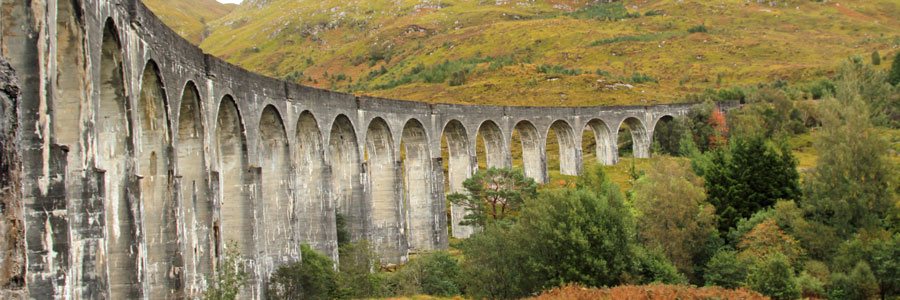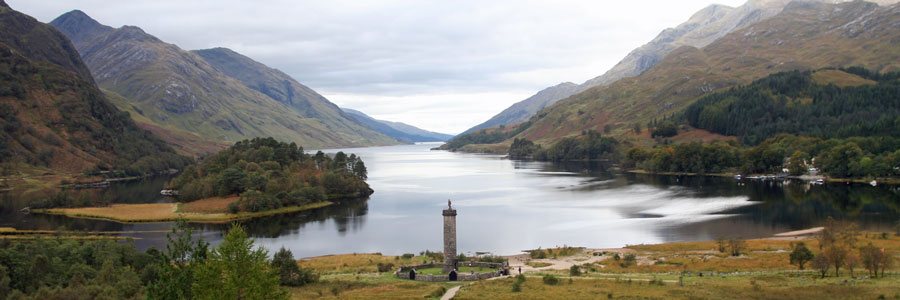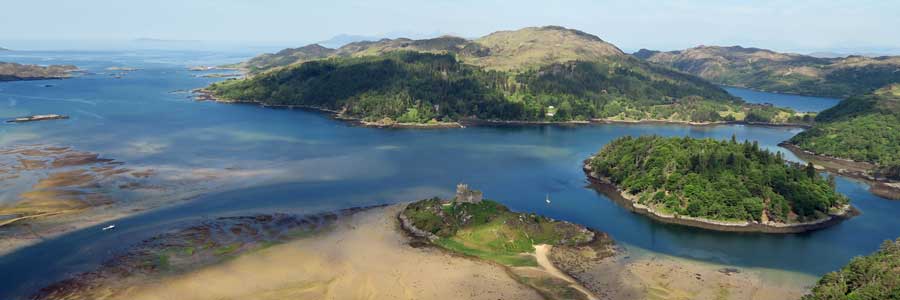 Moidart and the surrounding areas of Ardnamurchan, Arisaig, and Morar have a long history of settlement, beginning with nomadic bands of Mesolithic hunter-gatherers who hunted elk and boar in the forests and gathered roots and berries, and shared the land with large predators such as bear, wolf and lynx. This nomadic life style was later replaced in the Neolithic period by permanent settlement, farming of cereals and animal husbandry, and heralded the beginning of a more complex society. European and Irish invaders in the Bronze Age and Iron Age introduced new technologies and novel cultural and religious practices as evidenced in the tools and pots, burial cairns, hill forts and fortified settlements found the region. The Rough Bounds was part of the northern Pict territory, and separated from the ancient Scottish kingdom of Dalriada by the disputed region of Morvern.
Moidart and the surrounding areas of Ardnamurchan, Arisaig, and Morar have a long history of settlement, beginning with nomadic bands of Mesolithic hunter-gatherers who hunted elk and boar in the forests and gathered roots and berries, and shared the land with large predators such as bear, wolf and lynx. This nomadic life style was later replaced in the Neolithic period by permanent settlement, farming of cereals and animal husbandry, and heralded the beginning of a more complex society. European and Irish invaders in the Bronze Age and Iron Age introduced new technologies and novel cultural and religious practices as evidenced in the tools and pots, burial cairns, hill forts and fortified settlements found the region. The Rough Bounds was part of the northern Pict territory, and separated from the ancient Scottish kingdom of Dalriada by the disputed region of Morvern.
The fifth century saw the arrival of Celts from Ireland, who established a precarious existence in Argyllshire at the edge of the northern Pict territory. The spread of Christianity at this time also led to the establishment of churches and monasteries, most notable of which was the monastery in Iona, established by Saint Columba, which became the focal point for Celtic Christianity1. Records also suggest that St Columba also visited Ardnamurchan, Eigg, Skye and Canna2. St Finan, a celebrated evangelist in western Lochaber, established a religious community in Moidart. St Finan’s Isle on Loch Sheil, also known as the Green Isle, has remains of one of the oldest churches and cemeteries in the diocese (a sixteenth century chapel), as well as an ancient bronze bell believed to have been brought over by St Finan and imbued with healing powers. For centuries, St Finnan’s Isle has served as an important place of pilgrimage and interment for Moidart, Sunart, and parts of Ardnamurchan and Morvern.
Kenneth Macalpine, King of the Scots, united the two cultures when he inherited the Pict throne in 864, and lorded over the whole of kingdom of Alba. Meanwhile, numerous Viking raids led to settlement and domination, leaving a permanent mark in culture, language and history of the area. A clan system was founded based on the introduced feudal system which came into prominence under the reign of Malcolm Canmore between 1057- 1289, and continue to thrive after the wars of independence. The defeat of the Norse leader by the Somerled (known as the King of the Hebrides) in the mid thirteenth century marked the end of Viking rule and heralded the feudal era of King David II3.









